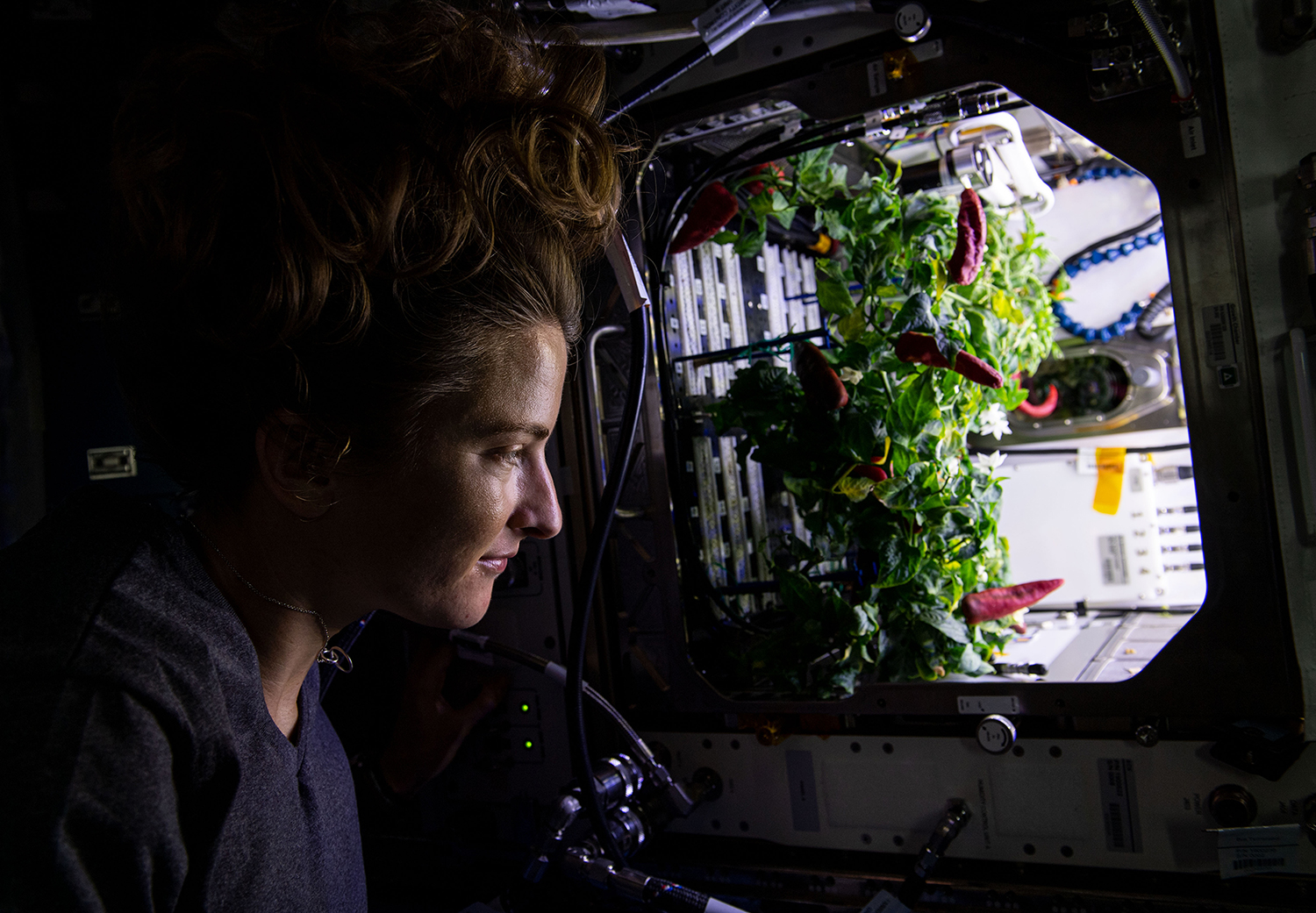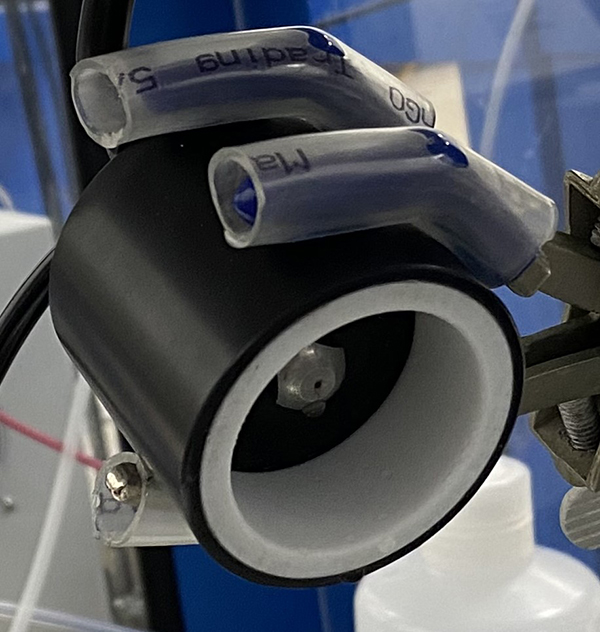
Spraying for Food Safety
Subheadline
Industry benefits from NASA-designed electrostatic spray nozzle
Whether protecting crops from diseases and pests or sanitizing contaminated surfaces, the ability to spray protective chemicals over important resources is key to several industries. Electrostatic Spraying Systems Inc. (ESS) of Watkinsville, Georgia, manufactures electrostatic sprayers and equipment that make this possible. By licensing NASA electrostatic technology, originally made to water plants in space, ESS’s improved spray nozzles efficiently use basic laws of electricity to achieve complete coverage on targeted surfaces.
ESS traces its origins to research done at the University of Georgia in the 1970s and ’80s. An electrostatic sprayer works by inducing an electric charge onto atomized droplets. Much like an inflated balloon sticking to a wall when it’s gained a charge of static electricity, the droplets then stick to targeted surfaces. However, electrostatic sprayers have a sweet spot for the droplet size, one that can be very hard to achieve.
“A 40-micron droplet is small enough to accept an electrostatic charge and yet large enough that it will moisten the surface,” said Bruce Whiting, owner of ESS. That’s a little smaller than the width of the finest human hair.
NASA’s interest in this technology originated with astronauts’ need for an easy way to support plant-growth experiments in space. On the International Space Station, watering plants without the help of gravity isn’t as easy as using a garden hose on Earth. But with an electrostatic sprayer, the water droplets would stick to the plants with uniform coverage. However, most spraying systems require large sources of water and air to properly aerosolize fluids, breaking them up into the minuscule droplets needed. As both air and water are precious resources in space, NASA needed an easier way to make these incredibly small droplets. Dr. Charles Buhler and Jerry Wang of NASA’s Kennedy Space Center in Florida led the efforts to develop this capability, with Dr. Edward Law of the University of Georgia as a consulting expert. Eventually, the NASA team developed a new design by learning from existing technology.
“We used a mister nozzle, which is what you see when waiting in line at Disney World,” said Buhler. “Using this, we can get it cheaper, lighter, and also have efficiency at charging and electrospray.”
Buhler said the primary advantage of a mister nozzle is that even though the interior volume of the nozzle is small, the pressure inside never builds up, which makes it perfect for enclosed small spaces like the space station. As the sprayer industry is a tight-knit group, technology transfer professionals at NASA reached out to the companies that could use a nozzle like this on Earth. Because ESS’s primary markets include agriculture and food production, the ability to use sprayers in small areas was an important feature. ESS responded to NASA and began discussions to see how well the spray nozzle would work on Earth. ESS later licensed the sprayer design from the agency and incorporated it into the company’s Maxcharge product lines.
Today, ESS uses the NASA-designed nozzle to make spraying more affordable while reducing water usage. The Maxcharge sprayers, including the NASA nozzle, are used by customers for sanitization, agriculture, and food safety. Whiting said ESS is appreciative of NASA, as the company is dedicated to sustainability and making life on Earth better and safer, while using less.

Electrostatic spray nozzles impart a small electric charge to miniscule particles of water, allowing the droplets to stick to surfaces. This array of sprayers, made by Electrostatic Spraying Systems (ESS), is used in food production. Credit: Electrostatic Spraying Systems Inc.

An ESS mister nozzle undergoes testing at Kennedy Space Center. The design was improved through collaboration between the company and NASA. Credit: NASA

Astronaut Kayla Barron looks at chile peppers growing in the Advanced Plant Habitat aboard the International Space Station. Determining the best ways to water plants in space resulted in the development of a new electrostatic spray nozzle, now licensed to industry. Credit: NASA













